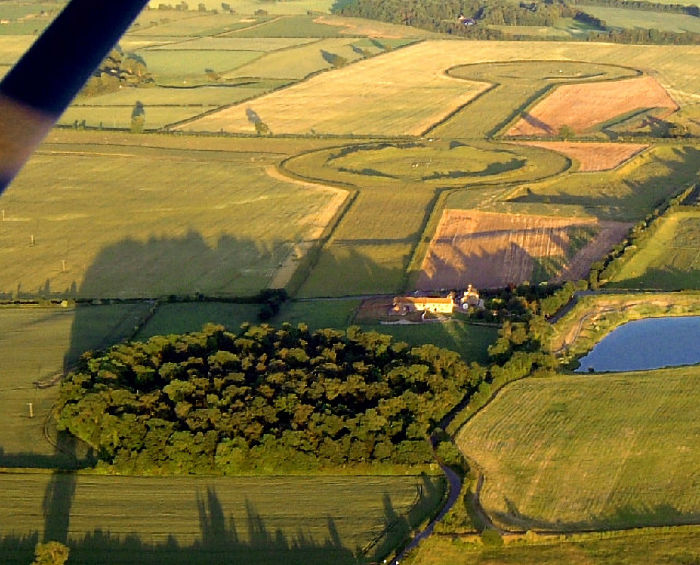Jan Bartek – AncientPages.com – When many ancient monuments and prehistoric places are either neglected or destroyed, news emphasizing the importance of preserving heritage is welcome.
Located near Ripon in North Yorkshire, England, the Thornborough Henges are an unusual ancient monument complex that includes the three aligned henges.

The three henges of the Thornborough Henges complex, looking south. Credit: Tony Newbould – CC BY-SA 2.0
The complex includes many large ancient structures, including henges, burial grounds, and settlements.
They are considered part of a Neolithic and Bronze Age ‘ritual landscape’ comparable to Salisbury Plain and date from between 3500 and 2500 B.C. This monument complex has been called ‘The Stonehenge of the North.’
In recent years there has been public concern about the impact on the ritual landscape of quarrying by Tarmac.
“Tarmac owns and operates the nearby Nosterfield gravel quarry, and their plans to expand quarrying operations in the area of Thornborough Henge have seen campaigners arguing against expansion for nearly two decades.
A judicial review in 2007 of planning permission that had been granted to expand the quarry found the process to have been “fatally flawed”.
Despite their historic significance and relatively well preserved status, the central and southern henges were added to Historic England’s Heritage at Risk Register in 2009 due to historic erosion caused by livestock and rabbits,” Darlington and Stock on Times reports.
After being gifted to the nation, the future is bright for the Thornborough Henges, and they are free to visit.
“Historic England and English Heritage have secured the future of two mᴀssive henge monuments and their surrounding landscape, part of a Neolithic complex in North Yorkshire described as “the Stonehenge of the North”. The henges will join Stonehenge and numerous Roman sites on Hadrian’s Wall within the National Heritage Collection,” Historic England reports.
“Thornborough Henges and their surrounding landscape form part of the most important concentration of Neolithic monuments in the North of England. They are a link to our ancient ancestors, through thousands of years, inspiring a sense of wonder and mystery. We are thrilled to have acquired this highly significant site for the nation, ensuring that these magnificent monuments are safe and will be preserved for generations to come,” Duncan Wilson, Chief Executive
Historic England said.
“The Thornborough Henges site has enormous potential to help tell the story of ancient Britain and I very much welcome this announcement about its future – its safeguarding and preservation for the nation.
Comparatively few people are aware of its significance – both locally and nationally. I hope many more will come to appreciate this little-known gem of our history and while doing so provide a welcome boost to the local visitor economy,” Rishi Sunak, Prime Minister MP for Richmond (Yorks) said.
“The Thornborough Henges complex gives us a fascinating insight into our ancestors and their lives thousands of years ago.
“It is wonderful news that this site will be protected as part of the National Heritage Collection and preserved so that generations to come can continue to be enthralled by, and help to unravel, the mystery of our shared past,” Heritage Minister Lord Parkinson of Whitley Bay said.
Written by Jan Bartek – AncientPages.com Staff Writer





